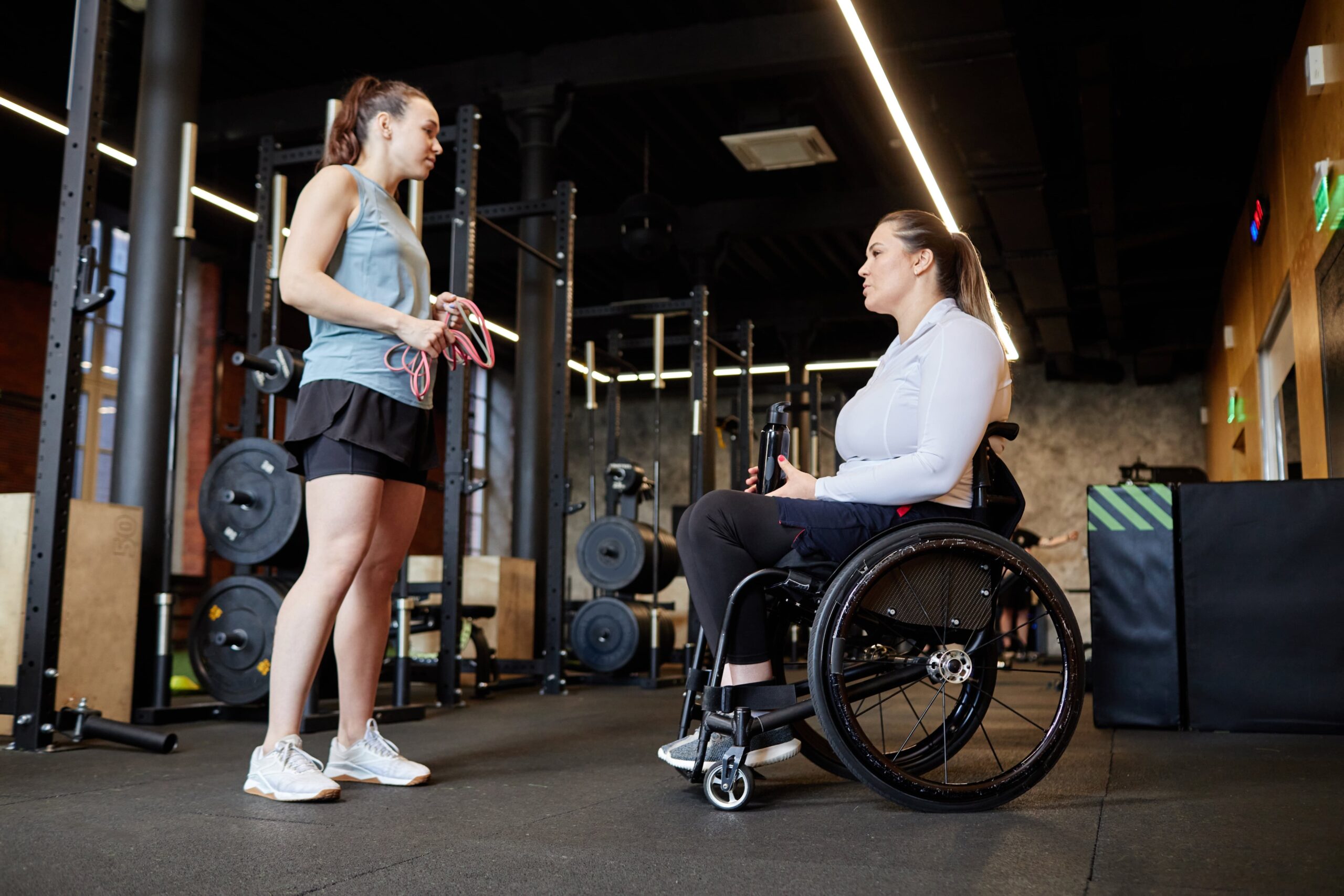Effective role transition communication forms the backbone of successful onboarding and training programs in today’s dynamic workforce. When employees change positions, take on new responsibilities, or join a team, clear communication channels become essential for maintaining operational continuity and employee satisfaction. Within the Shyft platform, role transition communication tools streamline this critical process, empowering managers and employees alike to navigate change with confidence. From initial onboarding through advanced training phases, transparent role communication establishes expectations, clarifies responsibilities, and creates a foundation for long-term success.
Organizations implementing comprehensive role transition strategies experience 62% faster productivity gains from new or transitioning employees, according to recent workforce studies. With features designed specifically for shift-based industries, Shyft’s team communication tools bridge information gaps that typically occur during role changes. The platform’s integrated approach connects onboarding processes, training resources, and team collaboration in one accessible interface, making role transitions smoother for frontline workers, management teams, and organizational leadership.
Understanding Role Transition Communication Fundamentals
Role transition communication encompasses all information exchanges that support an employee’s movement between positions or responsibilities within an organization. This foundational element of workforce management directly impacts how quickly employees adapt to new roles and reach full productivity. Effective communication strategies during transitions create clarity, reduce anxiety, and set proper expectations for all stakeholders involved.
- Role Clarity Documentation: Structured information regarding position responsibilities, expectations, and performance metrics.
- Knowledge Transfer Protocols: Systematic processes for sharing critical information between outgoing and incoming role holders.
- Stakeholder Communication Plans: Coordinated messaging that informs all affected parties about transition timelines and impacts.
- Training Roadmaps: Sequential learning paths that guide employees through necessary skill acquisition for new roles.
- Feedback Mechanisms: Structured channels for two-way communication during the transition process.
Organizations that prioritize these fundamental communication elements during role transitions report 41% higher employee retention rates during the first year in a new position. The onboarding process becomes significantly more effective when communication protocols are established before transitions occur, allowing both managers and employees to focus on knowledge acquisition rather than navigating unclear processes.
Role Transition Communication Features in Shyft
Shyft’s platform includes purpose-built features that facilitate seamless role transition communication across organizations of all sizes. These integrated tools enable consistent messaging, accessible training resources, and transparent process management throughout the transition journey. By leveraging technology for collaboration, teams can significantly reduce the time spent on administrative communication and focus on meaningful knowledge transfer.
- Role-Specific Messaging Groups: Dedicated communication channels that connect employees in similar roles for peer learning and support.
- Training Resource Libraries: Centralized repositories for role-specific documents, videos, and procedural guides accessible anytime.
- Progress Tracking Dashboards: Visual indicators of training completion and competency development during transitions.
- Manager-Employee Direct Channels: Private communication pathways for sensitive transition discussions and personalized feedback.
- Shift Handover Documentation: Structured templates for communicating critical information between employees during role transitions.
These features create a cohesive ecosystem for transition communication that adapts to various organizational structures. The implementation and training process for these tools can be customized based on team size, industry requirements, and existing communication procedures, ensuring proper integration with established workflows.
Creating Effective Onboarding Communication Plans
A structured onboarding communication plan serves as the foundation for successful role transitions. This strategic approach ensures consistent messaging across departments while accommodating individual learning needs. By establishing clear communication protocols from day one, organizations set the stage for smoother transitions and faster productivity gains. Manager guidelines for transition communication should be documented and standardized to maintain quality across different teams.
- Pre-Transition Communication Packages: Information bundles sent to employees before their first day in a new role.
- Structured Welcome Workflows: Automated communication sequences that introduce team members, resources, and expectations.
- Role Transition Checklists: Interactive task lists that guide employees through critical communication touchpoints.
- Knowledge Gap Assessments: Diagnostic tools that identify areas requiring additional communication focus.
- Milestone Communication Templates: Pre-formatted messages for consistent delivery at key transition points.
Organizations implementing comprehensive onboarding communication plans report 54% higher new role satisfaction rates and 34% faster time-to-productivity metrics. Establishing an onboarding buddy for shifts can further enhance communication by providing transitioning employees with a dedicated peer resource for questions and guidance throughout the process.
Training Communication Strategies for Role Transitions
Effective training communication during role transitions balances standardization with personalization to address diverse learning needs. By implementing structured yet flexible communication approaches, organizations can accelerate skill development while accommodating different learning styles. Training programs and workshops should incorporate varied communication methods to ensure information retention across all employee demographics.
- Multimodal Training Communication: Information delivery through text, video, audio, and interactive formats to accommodate learning preferences.
- Microlearning Communication Bursts: Short, focused information segments delivered at strategic intervals during transitions.
- Skill Verification Dialogues: Structured conversations that confirm understanding of critical role components.
- Just-in-Time Knowledge Resources: Accessible information repositories available at the point of need during transitions.
- Cross-Functional Exposure Sessions: Facilitated interactions with adjacent roles to establish communication pathways.
Organizations leveraging comprehensive training communication strategies during role transitions experience 47% fewer performance errors and 38% higher employee confidence scores. Recorded instructions serve as valuable supplementary communication tools, allowing employees to revisit critical information at their own pace while maintaining consistent messaging across all transition participants.
Building Manager Capacity for Transition Communication
Managers play a pivotal role in facilitating effective role transition communication, serving as the primary conduit for information flow between organizational leadership and transitioning employees. Equipping managers with the right communication tools, templates, and training significantly improves transition outcomes. Manager coaching specifically focused on transition communication skills should be a priority investment for organizations seeking to optimize their workforce development processes.
- Transition Conversation Frameworks: Structured discussion guides for consistent communication during key transition moments.
- Expectation Setting Techniques: Communication methods that clearly establish performance standards and development timelines.
- Feedback Delivery Protocols: Standardized approaches for constructive communication during skill development phases.
- Progress Assessment Dialogues: Regular check-in conversation formats that identify transition challenges early.
- Recognition Communication Strategies: Methods for acknowledging milestone achievements during the transition process.
Organizations that invest in manager communication capacity report 58% higher employee engagement during transitions and 43% faster resolution of transition challenges. Establishing clear implementation timeline planning for communication checkpoints ensures managers maintain consistent contact throughout the transition process, addressing questions and concerns before they impact performance.
Leveraging Digital Tools for Role Transition Communication
Digital communication tools have revolutionized how organizations manage role transitions, enabling real-time information sharing, progress tracking, and collaborative problem-solving. These technologies remove traditional communication barriers while creating documented information trails for future reference. Setting up your account properly in these systems ensures all communication features are accessible from the start of any transition process.
- Mobile-First Communication Platforms: Accessible messaging systems that connect transitioning employees regardless of location.
- Digital Knowledge Repositories: Searchable information libraries that provide instant access to role-specific guidance.
- Training Progress Dashboards: Visual interfaces that communicate completion status and next steps in transition journeys.
- Virtual Mentoring Channels: Digital connections between experienced employees and those in transition.
- Automated Notification Workflows: Triggered communication that ensures timely information delivery at critical transition points.
Organizations implementing comprehensive digital communication tools during role transitions see 52% improvements in information retention and 46% reductions in training time requirements. Team building tips delivered through these platforms can enhance social integration during transitions, addressing the often-overlooked interpersonal aspects of role changes.
Cross-Generational Considerations in Transition Communication
Today’s workforce spans multiple generations, each with distinct communication preferences and learning approaches. Successful role transition communication acknowledges these differences while maintaining consistent information delivery across all employee groups. Multi-generation scheduling training benefits from communication approaches that accommodate varying technological comfort levels and information processing styles.
- Communication Channel Variety: Multiple information delivery methods that accommodate diverse generational preferences.
- Technology Onboarding Support: Additional guidance for employees less familiar with digital communication tools.
- Communication Style Adaptation: Messaging approaches tailored to generational expectations without compromising content.
- Documentation Format Options: Information available in both digital and physical formats when needed.
- Cross-Generational Peer Partnerships: Intentional connections that facilitate information sharing across age groups.
Organizations that implement cross-generational communication strategies report 49% higher inclusion scores during transitions and 37% better knowledge retention across all age demographics. Cross-training for scheduling flexibility becomes more effective when communication methods accommodate generational differences, ensuring all employees can both receive and share information effectively.
Measuring Role Transition Communication Effectiveness
Systematic measurement of communication effectiveness provides valuable insights for ongoing improvement of role transition processes. By establishing clear metrics and feedback mechanisms, organizations can identify communication gaps before they impact transition success. Training for effective communication and collaboration should incorporate these measurement approaches to continuously refine organizational practices.
- Information Comprehension Assessments: Verification tools that confirm understanding of communicated expectations and procedures.
- Communication Satisfaction Surveys: Regular feedback collection regarding information clarity and delivery methods.
- Knowledge Gap Analysis: Systematic identification of information missing from transition communication.
- Time-to-Proficiency Tracking: Measurement of how quickly employees achieve performance standards following transitions.
- Question Frequency Monitoring: Documentation of recurring inquiries that indicate communication improvement opportunities.
Organizations that consistently measure communication effectiveness during role transitions achieve 56% faster identification of process improvements and 39% higher employee satisfaction scores. Establishing employee training metrics specifically focused on communication quality provides valuable data for continuous refinement of transition processes.
Role Transition Communication Best Practices
Industry-leading organizations have established proven best practices that elevate role transition communication effectiveness. These approaches prioritize clarity, accessibility, and consistency while maintaining flexibility for individual learning needs. Training system champions who model these communication practices creates a multiplier effect, spreading effective approaches throughout the organization.
- Communication Timeline Visualization: Clear mapping of when specific information will be shared during transitions.
- Responsibility Matrix Documentation: Explicit delineation of which stakeholders communicate what information.
- Information Layering Approaches: Strategic sequencing of complex information to prevent overwhelm during transitions.
- Two-Way Communication Verification: Confirmation processes that ensure messages were both received and understood.
- Consistent Communication Templates: Standardized formats that maintain message clarity across different transitions.
Organizations implementing these communication best practices experience 63% fewer misunderstandings during transitions and 51% higher manager satisfaction with the transition process. Developing comprehensive employee scheduling systems that incorporate role transition communication touchpoints ensures these practices become embedded in organizational workflows.
Conclusion
Effective role transition communication serves as the foundation for successful onboarding and training initiatives across organizations of all sizes and industries. By implementing structured communication processes, leveraging appropriate digital tools, and acknowledging the diverse needs of employees, organizations can significantly improve the speed and quality of role transitions. Shyft’s integrated platform provides the comprehensive communication infrastructure needed to connect people, information, and processes throughout the transition journey, reducing friction and accelerating productivity gains.
Organizations seeking to optimize their role transition communication should begin by assessing current practices against industry benchmarks, identifying key improvement opportunities, and implementing targeted enhancements to their communication infrastructure. By prioritizing clear, consistent, and accessible information exchange during role transitions, businesses can transform a traditionally challenging process into a strategic advantage that drives employee engagement, retention, and long-term performance outcomes. The investment in robust role transition communication fundamentally shapes how employees experience organizational change, ultimately determining the success of workforce development initiatives in today’s dynamic business environment.
FAQ
1. What communication challenges typically occur during role transitions?
The most common communication challenges during role transitions include information overload, inconsistent messaging across different channels, lack of clear responsibility assignment, gaps in knowledge transfer from previous role holders, and insufficient feedback mechanisms to identify misunderstandings. Organizations can address these challenges by implementing structured communication plans with clear ownership, utilizing digital tools for consistent message delivery, establishing knowledge transfer protocols, and creating regular feedback opportunities throughout the transition process. Proper team communication infrastructure provides the foundation for overcoming these obstacles.
2. How can digital communication tools improve role transition outcomes?
Digital communication tools improve role transitions by providing consistent information access regardless of location or time, creating documented reference materials that reduce reliance on memory, enabling progress tracking through visual dashboards, facilitating direct connections between transitioning employees and subject matter experts, and generating analytics that identify communication gaps for continuous improvement. Mobile-first platforms are particularly valuable for frontline workers who may not have regular access to computers. Leveraging technology for collaboration during transitions significantly reduces the administrative burden while improving information retention and application.
3. What metrics should organizations track to evaluate transition communication effectiveness?
Organizations should measure transition communication effectiveness through multiple complementary metrics, including time-to-proficiency in new roles, error rates during early transition periods, employee satisfaction with communication clarity, frequency of repeated questions indicating communication gaps, and manager assessment of knowledge transfer completeness. Additional valuable metrics include communication engagement rates (how actively employees interact with provided information), retention of communicated information over time, and the number of escalated issues resulting from miscommunication. Training for managers should include guidance on collecting and interpreting these metrics for continuous improvement.
4. How should role transition communication differ between internal promotions and external hires?
Role transition communication for internal promotions should focus on differentiating new responsibilities from previous ones, establishing changed relationship expectations with former peers, transferring informal organizational knowledge from the previous role holder, and addressing potential knowledge gaps despite familiarity with the company. For external hires, communication priorities include orientation to organizational culture and norms, introduction to key stakeholders and communication channels, baseline explanation of internal systems and processes, and more intensive support for initial relationship building. Both scenarios benefit from clear expectations and feedback mechanisms, though the emphasis and starting point differ significantly. Employee training approaches should be adapted accordingly to address these different information needs.
5. What role do team members play in supporting effective transition communication?
Team members contribute significantly to transition communication by providing context-specific knowledge that formal documentation often misses, offering informal guidance on navigational aspects of the role, sharing historical information about processes and relationships, providing diverse perspectives on role responsibilities, and creating psychological safety for questions and clarification. Organizations should establish explicit expectations for team contribution to transitions, potentially through structured peer mentoring, scheduled knowledge-sharing sessions, or dedicated transition support roles. Team building tips can help integrate these practices into existing team dynamics, creating a culture where effective transition support becomes standard practice.












